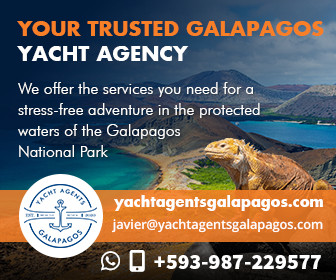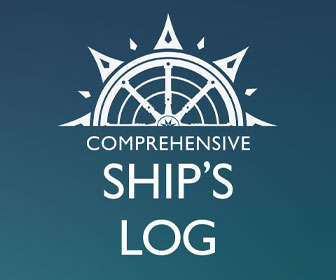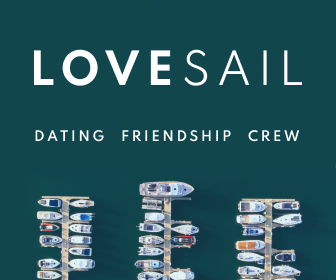Cuba Notes – July 2010
Published 13 years ago, updated 5 years ago
Our thanks to the Cruisers_Network_Online for sharing this report with noonsite.
Overall
There are two pilots available, by Nigel Calder and Simon Charles. Both are 12 – 14 years out of date, but still accurate, as far as we could find, on harbours and rocks. Nigel Calder’s is the more detailed, totally meticulous in the charting of bays and rocks if a little short on adjectives.
Expect the bureaucracy to single-handedly support the remnants of the carbon paper business, but the people you meet to be charming and friendly – even the customs.
If you don’t speak Spanish, it’s worth picking up as much as you can before you arrive. The Cubans are the best thing about Cuba – they have been uniformly warm, lively, generous and welcoming, but outside the tourist industry, few speak English. Even a few words of Spanish are greeted with pleasure, and it doesn’t take many more to start having conversations and getting a little closer to the “real” Cuba.
If you are to have an uncomplicated passage along the coastline, you need enough Spanish to be able to understand when the coast guard is calling you and to be able to answer questions about the boat, where you cleared into Cuba, and where you are going.
Passage Planning
If coming from the south, pay particular attention to the forecast for the Windward Passage, between Haiti and Cuba. Although the passage looks quite wide, wind and waves can funnel through here, giving 24 hours of very hard, bumpy, wet beating to windward.
Ports of entry
Bahia de Naranjo on the north coast, 120 miles west of Punta Maisi, is no longer a port of entry. This has been transferred to Bahia de Vita, ten miles further down the coast.
Navigation
Many parts of Cuba are steep too. Very. Which is good because you can hug the shoreline if you want to get out of an unfavourable tide, but bad because you go from the echo sounder flashing because it can’t find anything to get a fix on, to aground, in about 50 yards. I am not exaggerating.
Note also that the Cuban charts on which our chart plotter is based do not have a WGS 84 offset, so, for us, the chart is SW of reality by 50 yards …
There are traffic separation zones on the north and east coasts of the island (that I know about). The inner lane goes clockwise.
Buoyage varies in reliability. They use IALA B (Red Right Returning). They also use sticks and withies, and cones balanced on top of posts. What seems like a well-buoyed channel can suddenly appear to reverse, or vanish. If the harbour master offers to come out and guide you into a new port, take him up on the offer, even if it means waiting a little while.
We went aground (mud) going into, and leaving, Bahia de Vita, but the channel from the NW into Marina Aqua / Darsena (at Varadero) was well dredged, and we found at least 4m the whole way in. Bahia de Vita uses Ch 10 and Marina Darsena 72, though they both also listen on Ch 16.
Arrival and Customs
Our concerns about the Guarda Frontera were groundless. We may well have been watched on the radar, but nobody showed any interest in us until we turned in towards our first port. At which point the radio sprang to life (Ch 16) and we were invited (very politely and in good English) to identify ourselves.
Yes, arriving does involve several different sets of officials, but all bar two do all their work at the same time. All were charming, friendly, happy for us to practise our Spanish, but with very workable English. There wasn’t the remotest hint of asking for “presents”, either in Bahia de Vita or in Varadero.
First came the doctor to give the certificate of Free Pratique. This involves filling out two forms in duplicate, and not coughing or sniffing while he’s on board. I now wish we had thought to offer him supplies from our well-stocked boxes of basic medicines.
Then we had agriculture, customs, the harbour master and drug control, and one nameless official who was in charge of all the others. Drug control had a very well-trained cocker spaniel, which sniffed enthusiastically all over, jumping up on the berths, and getting well stuck into our pile of dirty washing. Just close your ears to the click of her toenails on the varnish. Agriculture (the charmingly translated Department of Vegetal Sanity) was very thorough but gave us no problem. All our fruit and vegetables were thoroughly inspected, and all the little plastic boxes with rice or flour or beans turned over attentively, but nothing was confiscated apart from a little bag of flour mixed with spices and ground black pepper.
We brought in cheese, eggs, bacon, butter, salami, UHT milk and juice, honey, nuts, sunflower seeds, mung beans, fruit, vegetables and salad without any problem. We had no fresh meat or fish, having eaten it all on passage, but would have been alright with that, too, in reasonable quantities. Vegetal Sanity enjoined us to place rat guards – it took us a while to realise this was to stop our rats from getting onto Cuban soil …
The final stage was when the harbour master disappeared on his moped with our passports, promising to have them back with visas in 20 minutes – it was closer to a couple of hours. In all, checking into the country took about five hours. We have plenty of notice of our intention to leave our first port, and departure took around 30 minutes.
The current rules say that any meat or meat products which come from countries which have foot and mouth, African Swine Fever, Rinder-Pest or Swine Vesicular Disease are not welcome. However, milk, butter, cheese, fish and seafood, as well as canned meat, are not a problem.
For customs, we had to declare all our mobiles, laptops, radios, cameras, aerials etc, so it is worth doing a quick count and making a note of what you have before you arrive. Expect portable VHF or GPS sets to put into a sealed bag when you arrive, and that bag and its seal to be checked before you leave.
Money
Cuba uses two currencies: the Convertible Peso (CUC) and the Peso Nacional (peso). A CUC is worth 24 pesos and can be freely exchanged, in either direction, in some banks and in little bureaux de change, called cadecas. The CUC is worth around US$1.12. You have to exchange foreign currency into CUCs first, and then change a few CUCs into pesos; you can’t change money directly into pesos. If possible, bring cash for exchanging in sterling or euros, as dollars are changed at a disadvantageous rate, adding a 10% “tax”.
In some banks in the larger towns or in tourist resorts, you can get money out with a credit card, as long as it is not issued or managed by a US bank. The shops which take credit cards (again, those with no connection to US banks) are few and far between and are most likely to be in tourist resorts. We found ATMs only in the centre of Havana.
There are no legal restrictions on Cubans holding and spending CUCs, or on foreigners using pesos.
Along with the two currencies, there are two parallel economies in Cuba, one denominated in CUCs and the other in pesos. Anything “official” you need to spend money on: clearance fees, marina dues, taxis arranged through the marina, train fares, a room in a casa particular for the night, will be denominated in CUCs, as are the “luxuries” only available in hard currency shops, like soap and cooking oil. Prices in CUCs are “western”. A hire car for a day was CUC 55, a marina in the east of the island was CUC 0.6 per foot per day.
Prices in pesos reflect the average local salaries, and are, therefore, to our eyes, ridiculously cheap. A meal in a peso-priced restaurant might be 30 pesos (£1), a kilo of tomatoes or peppers at a Mercado 5 pesos (4 pence), an ice cream from the side of the road 1 peso, a trip in a horse-drawn taxi (not a tourist trap, just the way that many people get around, given the impossibly high price to them of cars) a few pesos.. There aren’t many places you can spend pesos, and they go a long way, so 20 CUCs worth should be enough for a couple of weeks.
Provisioning
It is hard to imagine the level of deprivation in Cuba until you get there. In addition, travelling along the coast, you may want to make several short hops, and stop in empty bays tucked in behind the reefs, where there are no villages or shops. A lot of things are simply not available; while we were here, they included butter and potatoes – for breakfast, we were offered mayonnaise to spread on the bread, and for lunch and supper it was always rice and beans. Things like razor blades, shampoo and loo paper, could only be found in hard currency shops. Don’t expect them to be there when you visit. Little old ladies come up to you in a square and beg for soap. If we came again, we would stock up with inexpensive toiletries, as presents, and on occasion for barter – the going rate for more bananas than we could eat in a week was half an (unused) bar of soap, a biro and an old pot of nail varnish.
Fruit and vegetables are available in the markets, but erratically. Nothing imported, and only what’s in season. We regretted having eaten our carrots and lettuce on passage, fearing (wrongly) that they would be impounded on arrival. While we were in Bahia de Vita, there was an abundance of tomatoes, peppers, onions, garlic, coriander, bananas, plantains and papayas. But nothing else. In Varadero, closer to Havana, the market had a larger selection, including carrots, luscious pineapples, guava, watermelon, aubergines and yams.
Frozen meat is generally available in hard currency shops; so far the choice has been chicken thighs or pork chops. Fresh meat can be found in most of the markets and has been delicious. Bread can occasionally be bought, depending on where you are, but don’t count on it. In many places, bread, like rice and some other staples, is rationed and issued to the people in exchange for coupons, with the result that they cannot be bought at all. If you plan to make bread, don’t forget to bring your own yeast; you won’t find it in Cuba.
Don’t even think of finding such luxuries as biscuits or nuts or dried fruit, cereal or couscous …
Boat spares are, again, apparently non-existent. Cuban mechanics have a good reputation, and the cost of work is only 3 CUC an hour, but if you haven’t got the parts you need, your problem is unlikely to get fixed here. The “chandlery” at the marina in Varadero had a stock made up of fishing lures, house paint, garden hose, and a couple of plated jubilee clips.
Mosquitoes etc.
Bring plenty of mosquito netting, smoke coils, insect repellent and antihistamine cream, none of which you are likely to be able to buy on the island. No-see-ums here are called jejenes, and they can be infernal.
Travelling around the country
Road maps and road signs are both virtually non-existent in the eastern part of the island. Don’t assume you will get a map if you hire a car. If planning to explore the interior independently, I would print out as many maps as possible from Google Earth before setting out. The good news is that practically every junction will have a couple of people sitting patiently waiting for a bus or a lift, and they will always point you on the right way (but don’t expect them to speak English).
Hitch-hiking is a way of life for everybody, and completely safe, both as hitcher and giver of lifts.
The road quality varied enormously. Some main roads were good, if tired. Some, in the centre and the east, even between two large towns, were appalling: pot-holed, rutted, in some places little more than dirt tracks. Roads near the large tourist hotels or closer to Havana tend to be better.
As foreigners, nobody appeared to show any official interest in where we were going or who we talked to. We didn’t have to file a plan at the car hire office or to check in with the police when we got to a new town. However, each night we had to present our passports when we checked into our casa particular, and the details were noted on the register.
Communications
Communications in Cuba are difficult, slow and expensive. Tell your family and friends not to worry if they don’t hear from you for a while.
The internet can sometimes be found in larger towns or tourist resorts – look for a smart shop or cabin labelled “ETECSA”. In 2010, an hour’s internet cost CUC 6. Even in an ETECSA, expect speeds around 1Mbps at best, and be prepared for it not to work at all. Don’t expect to get wifi anywhere, except in some smart hotel lobbies, and then you will still have to pay, and the speed will be very slow.
You can buy phone cards to make calls at the public phones, but they cost around CUC 2 a minute to call overseas. It may be possible to rent a local SIM card for your mobile phone, but this, and the calls are also expensive. Local calls with a phone card are reasonably priced.
Politics
There are some excellent things about Cuban society, there are many we find incomprehensible. But make no mistake, it is a highly controlled and regulated country, where debate and discussion are not tolerated, let alone dissent. As an example, a person would drop their voice and check they were not being overheard before venturing the opinion that Raúl Castro is not as eloquent a speech-maker as his brother. Bear in mind that if someone insists on talking to you in English, it may be because they feel safer like that.
Before you leave for Cuba
Provision as you would for an ocean crossing; don’t rely on finding anything you will need.
Stock up on inexpensive toiletries, particularly soap, as presents or for barter.
Get anything you do via the internet: email, banking etc. up to date.
If you are planning to explore by hire car, print out any maps you can find of Cuba.
Research cultural events in Havana and elsewhere: information is hard to come by once in the country.
Get any information, charts etc. you will need for your next port of call after leaving Cuba.
Visiting the island – a quick and subjective view
Havana, particularly the old part, is wonderful, and well worth a visit of several days. UNESCO has declared it a world heritage site, and a great deal of money is being spent restoring the beautiful old buildings and squares.
Havana can be visited from Trinidad (four hours by coach), Varadero (three hours by coach) or Marina Hemingway. The advantage of Varadero over Hemingway for anybody heading up to the US is that you maintain your easting.
Many things that might be typical tourist attractions anywhere else: a tobacco factory, a chocolate factory, were in fact “proibido”, despite their being written up in our guide book. They will probably be open by the time you visit, and something else will have closed.
We hired a car in Bahia de Vita to tour the eastern end of the island: Holguin, Santiago de Cuba, Guantánamo, Baracoa, and the long road back along the north coast. We were disappointed in Holguin and Santiago, mainly because our guide-book tended to over-do the praise of the architecture, perhaps it is stunning – by local standards. This is not Verona. The UNESCO money that has made such a difference to Havana has not got this far, and most of the buildings have passed from “faded elegance” to quite simply “falling down”. But without such high expectations, we would have enjoyed the trip more.
The road along the north coast is terrible in places, particularly going north from Baracoa, where it is largely unsurfaced. It was a long day’s drive back to Bahia de Vita. Perhaps the most interesting thing along the road was the nickel works at Moa, where the blighted landscape with its billowing black smoke and poisoned trees was how one might imagine Mordor.
We always stayed in Casas particulares (state-sanctioned B&Bs; denoted by a blue symbol that looks like an upside-down anchor) and they were uniformly spotlessly clean and friendly. They all had working air con or a fan. Hot water in the showers was an occasional treat. In theory, it is illegal for you to spend the night in a private house unless it is a casa particular. In Havana, it is worth booking a day or two in advance for any casa particular mentioned in your guidebook. But if the one you want is full, they will always recommend a neighbour.
Our time in Cuba was quite limited, so we focussed on exploring inland, not stopping off at all the little bays along the coast The northern coast looked lovely, and the couple of bays we went into were pretty enough, and ideal if you want to get away from everything completely.
Celia Mason
Related to following destinations: Cuba







